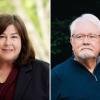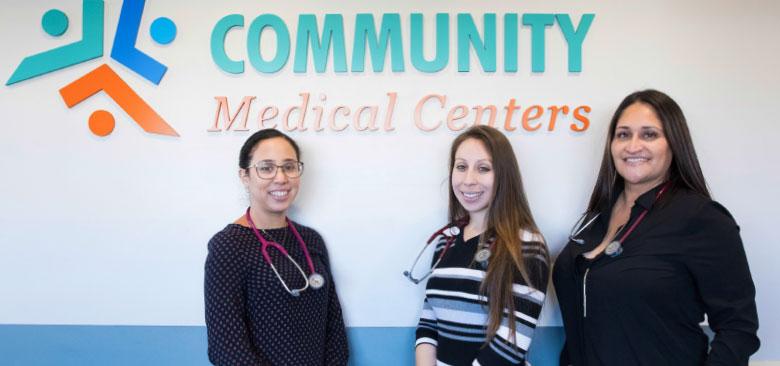
From left: UCSF School of Nursing graduate Vanessa Gutierrez (PNP '18) with FNP student Lilly Chavez and faculty member Elizabeth Castillo (photos by Elisabeth Fall)
Nurse Practitioners Can Help Close California’s Primary Care Gap, But It Won’t Be Easy
According to a September 2018 paper in Health Affairs, “Nurse practitioners are well prepared to help fill care gaps arising from shortages of primary care physicians in California.” Those shortages have the greatest effect on the nearly 8 million Californians living in the state’s 640 primary medical care Health Professional Shortage Areas (HPSAs). The Health Resources and Services Administration (HRSA) defines HPSAs as having a population-to-primary care physician ratio of more than 3,500 to 1.
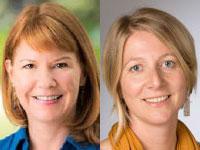 Joanne Spetz (left) and Ulrike Muench UCSF School of Nursing faculty members Joanne Spetz and Ulrike Muench at the Healthforce Center at UCSF co-authored the Health Affairs article, which argues that “Expanding education programs in underserved areas, increasing the diversity of the nurse practitioner [NP] workforce, and ensuring that nurse practitioners feel empowered to fully use their skills are necessary to meet both current and future primary care needs.”
Joanne Spetz (left) and Ulrike Muench UCSF School of Nursing faculty members Joanne Spetz and Ulrike Muench at the Healthforce Center at UCSF co-authored the Health Affairs article, which argues that “Expanding education programs in underserved areas, increasing the diversity of the nurse practitioner [NP] workforce, and ensuring that nurse practitioners feel empowered to fully use their skills are necessary to meet both current and future primary care needs.”
The School takes the article’s conclusions seriously, with efforts that include:
- Researchers affiliated with the School providing the evidence base for policymakers
- Using NPs to tailor innovative clinical models to the needs of rural community clinics
- Creating a Rural Health Minor aimed at helping NP students feel well prepared to practice in rural settings
- Establishing training programs to expand the availability of preceptors in rural and underserved areas
- Offering doctoral programs – both PhD and DNP degree programs – that train faculty for burgeoning NP programs throughout the state
Research Supports Lifting Restrictions on NP Scope of Practice
California’s NP scope-of-practice laws require that NPs work under the supervision of a physician – this despite the fact that numerous studies have demonstrated that NPs deliver care that is at least equal in quality outcomes to that of primary care physicians and, in many cases, lower cost.
Other studies show educational programs are training primary care NPs at a much faster and more prolific rate than their physician counterparts. If these NPs choose to practice in underserved areas, they could significantly boost efforts aimed at plugging the primary care gap.
They may well be willing to make that choice. Numerous studies indicate that NPs choose to work in rural and underserved areas at higher rates than their physician counterparts – and this occurs in greater frequency in states that have lifted restrictions on scope of practice.
California’s restricted scope-of-practice regulations raise a number of other concerns as well. Some worry NPs are moving or will move to one of the 22 states (or the District of Columbia) where they can already practice to the full extent of their license. Spetz points to how practices such as requiring physician review of charts and obtaining their approval for certain prescriptions or treatments likely add to the cost of care. A study she published in 2013 in Health Affairs found that states with restricted scope-of-practice regulations cut into potential cost savings associated with using NPs in retail health clinics.
The California Future Health Workforce Commission considered all of these factors before releasing a report in January 2019 that included the following recommendations: expanding NP education to increase the supply of primary care providers in underserved communities, maximizing full use of NP skills within current scope-of-practice regulations and reforming scope-of-practice regulations to give NPs full practice authority after a transitional period of collaboration with a physician or experienced NP.
While the recommendations are not everything NPs want and won’t solve all of the barriers to NPs closing the primary care gap, “They represent a huge improvement over where we are,” says Spetz. She is hopeful that they may finally generate enough political support for easing practice restrictions on California NPs and get the state thinking more strategically about how to take advantage of NPs as a powerful resource for improving individual and population health throughout the state. Other School efforts can help lead the way.
NP-Led Shared Medical Appointments
Both primary and specialty care practices have begun implementing shared medical appointments (SMAs) as one way to more efficiently deliver care to more patients. Though SMAs are typically multidisciplinary, NPs have not always been included as part of the team.
Faculty member Carolina Noya’s work may lead to widespread use of an SMA model that puts advanced practice nurses at the center of delivering cost-effective health care to high-risk patient populations. With the help of an HRSA grant, Noya’s version of an SMA targets patients with type 2 diabetes who are medically underserved. During a two-hour visit (as opposed to a series of rushed 20-minute visits), a group of eight to 12 patients shape their appointment according to their needs. This allows the multidisciplinary team, typically led by an NP, to more effectively incorporate patients’ concerns when teaching diabetes self-management. At the same time, the model effectively encourages patients to form relationships with each other and provide peer support and education.
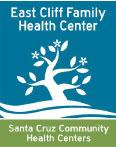 Noya piloted the concept at the East Cliff Family Health Center in Santa Cruz, part of the Santa Cruz Community Health Centers. The study of her initial implementation – which is the basis of her 2017 doctoral dissertation – found that the model increases access to care for this patient population and significantly improved hemoglobin A1c (HbA1c) levels.
Noya piloted the concept at the East Cliff Family Health Center in Santa Cruz, part of the Santa Cruz Community Health Centers. The study of her initial implementation – which is the basis of her 2017 doctoral dissertation – found that the model increases access to care for this patient population and significantly improved hemoglobin A1c (HbA1c) levels.
Since then Noya has helped to implement the model in three different rural clinics throughout the state: Community Medical Centers in Stockton, Altura Centers for Health in Tulare and Camarena Health in Madera. She is also bringing the model to rural communities in Mexico. In the next few months, Science of Caring will cover Noya’s work and its impact in more detail.
“This is a university-community partnership that is expanding access to culturally and linguistically congruent care in areas where a lack of adequate insurance, food insecurity [and other social determinants] intersect with type 2 diabetes,” says Noya. It’s also a model that eases demands on the areas’ overextended primary care providers.
The Rural Health Minor
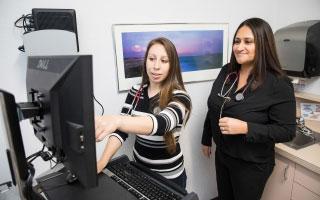 “As a single mother myself, I know what it's like to struggle with child care and to need to utilize social services,” says FNP student Lilly Chavez (left), seen here with her preceptor, Elizabeth Castillo. It would be hard to find someone better suited to serving a rural, underserved population in California than Lilly Chavez. Chavez was born in East San Jose and grew up in Modesto, where her mother – who had been a nurse in El Salvador – worked as a medical assistant. A native Spanish speaker, in 2010 Chavez earned a BA degree in sociology at UC Berkeley, and then went on to work as a case manager at a San Francisco homeless shelter. There she became intimately acquainted with her clients’ medical and mental health needs.
“As a single mother myself, I know what it's like to struggle with child care and to need to utilize social services,” says FNP student Lilly Chavez (left), seen here with her preceptor, Elizabeth Castillo. It would be hard to find someone better suited to serving a rural, underserved population in California than Lilly Chavez. Chavez was born in East San Jose and grew up in Modesto, where her mother – who had been a nurse in El Salvador – worked as a medical assistant. A native Spanish speaker, in 2010 Chavez earned a BA degree in sociology at UC Berkeley, and then went on to work as a case manager at a San Francisco homeless shelter. There she became intimately acquainted with her clients’ medical and mental health needs.
Their needs inspired Chavez to apply to the School’s Master’s Entry Program in Nursing, which she entered in 2016. Since earning her RN license, Chavez has been working as a nurse at LifeLong Medical Care in Berkeley, while completing her master’s degree and the requirements to become a family nurse practitioner. She’s doing all this as a single mother; her son is now nine years old.
Chavez is also completing the School’s recently established Rural Health Minor, which in her case includes five intensive, weeklong rotations at Community Medical Centers, a network of Federally Qualified Health Centers (FQHCs). Chavez says her life experience plays a large role in connecting effectively with her patients.
“Growing up, I spent a lot of time with my relatives in El Salvador, who lived in rural towns, in immense poverty. And as a single mother myself, I know what it’s like to struggle with child care and to need to utilize social services,” Chavez says. “When patients realize I come from a similar culture and background to theirs, it is amazing to see the changes in not only their comfort, but in their trust in me as a person from their community.”
UCSF faculty member Elizabeth Castillo, who directs the School’s Rural Health Minor, is Chavez’ preceptor at Community Medical Centers. Castillo says that a central goal for the minor is to attract students like Chavez who have a passion for working with rural populations and place them in clinical rotations in the communities where they hope to work.
“Lilly has family in the Central Valley and hopes to come here after graduation,” says Castillo. “We are committed not just to forming community partnerships where our students hope to work, but also giving them the curriculum they need to make an effective transition to a rural care practice.”
To wit, each of the minor’s three quarters has a distinct focus. The first covers policy affecting rural health providers, including privileges, available resources and how the social determinants of health unique to rural settings affect how NPs deliver care. In the second quarter, the focus shifts to the diseases and injuries more prevalent in rural areas. The final quarter focuses on the challenge of practicing in small communities, where the same people you see in clinic may well be the ones you see grocery shopping and at your child’s school. Class time often includes guest lectures by practitioners drawn from several community partnerships throughout the state.
“We cover topics we don’t touch too much in other classes…things like how to teach diabetes self-care if the patient can’t take his insulin into the field where he works,” says Chavez. “I love it.”
The program is already generating results. Of the nine students in the 2018 cohort, four now practice in rural health settings – including one at Castillo’s clinic – and another two are completing NP residencies. While 2019 is the final year under the HRSA grant that supported creation of the Rural Health Minor, says Castillo, “We are hopeful and working to secure funding to extend the program.”
Developing a Network of Trained Preceptors
For UCSF and other NP programs trying to help fill the primary care gap, finding qualified preceptors for their students can be an enormous hurdle. Existing preceptors tend to be spread thin across programs offered by University of California campuses, California State University campuses, private universities and a growing number of residency programs.
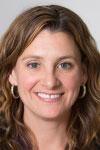 Elizabeth Gatewood “One of the barriers to precepting is clinicians often lack confidence in their ability to teach,” says Elizabeth Gatewood, director of the School’s Family Nurse Practitioner (FNP) Program. In response, with the help of two HRSA grants, the School has forged partnerships with the Central Valley Health Network, a network of 15 FQHCs, and the Redwood Community Health Coalition, a network comprising 17 community health centers and a wellness education site. For clinicians interested in precepting at those clinics, the School provides training and faculty development through the Teach for UCSF Certificate Program.
Elizabeth Gatewood “One of the barriers to precepting is clinicians often lack confidence in their ability to teach,” says Elizabeth Gatewood, director of the School’s Family Nurse Practitioner (FNP) Program. In response, with the help of two HRSA grants, the School has forged partnerships with the Central Valley Health Network, a network of 15 FQHCs, and the Redwood Community Health Coalition, a network comprising 17 community health centers and a wellness education site. For clinicians interested in precepting at those clinics, the School provides training and faculty development through the Teach for UCSF Certificate Program.
Castillo believes this is a win-win for both the School and the clinics, because the participating clinics often wind up retaining strong clinicians who understand their specific needs. “It takes…guidance and support to have an effective, productive clinician at your site,” she says.
Training Faculty
While the preceptor training and Rural Health Minor are important advances, the state will need many more NPs to fill the gap than UCSF alone can provide. Moreover, says Muench, the fact that the preponderance of nursing and NP programs are located in urban areas tends to work against the need to attract NPs to more rural settings. Both she and Spetz believe it is important for the state to step up support for California State University campuses in rural areas to expand their nursing programs and/or develop new ones.
To do that, however, these schools face another challenge: finding qualified faculty to teach in their programs. UCSF is trying to do its part through its PhD and DNP degree programs. Carolyn Martin, who received her PhD from UCSF in 2006, is one example. After her UCSF graduation, Martin joined the nursing faculty at California State University, Stanislaus. “I felt I needed to serve my community,” she says.
Since her arrival, Martin has been instrumental in creating the Stanislaus master’s degree in nursing and NP programs. The master’s degree program began by offering concentrations in education and gerontology and has since added a concentration in administration. Having struggled for years to attract enough applicants for its faculty positions, Martin says the education concentration has become a fertile training ground for homegrown faculty.
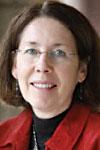 Carolyn Martin “We’ve graduated enough master’s students to fill some faculty positions, and to keep them at Stanislaus, we’ve begun offering more mentoring, as well as an online class,” she says. Yet she hastens to add that most clinical nurses can earn more than faculty members, so growing these programs may also have to involve salary increases for nursing faculty.
Carolyn Martin “We’ve graduated enough master’s students to fill some faculty positions, and to keep them at Stanislaus, we’ve begun offering more mentoring, as well as an online class,” she says. Yet she hastens to add that most clinical nurses can earn more than faculty members, so growing these programs may also have to involve salary increases for nursing faculty.
As for the NP program, in 2017 Livingston Community Health – a health center in nearby Livingston, California – offered to support development of a family nurse practitioner (FNP) program at Stanislaus and provide forgivable loans for students willing to work in designated zip codes after completion. The catch was that the school needed to put together a curriculum and get approval for the program within a year.
“It was a challenging experience,” says Martin, “but we got it done.”
An initial cohort of 24 students began in January 2018, and a second began in January 2019. “Every one of our students live and work in our service area [Calaveras, San Joaquin, Stanislaus, Merced and Tuolumne counties], and their intent is to stay here,” says Martin.
Meeting the Need for Change
Martin’s career path, the newly created program at Cal State Stanislaus and the full array of UCSF programs all can be important models for implementing the recommendations of the California Future Health Workforce Commission and more strategically attracting, training and retaining NPs, who are so desperately needed to help address California’s glaring shortage in primary care.
But significant change is necessary, says Spetz, adding, “I don’t understand how anybody can support maintaining the status quo.”


